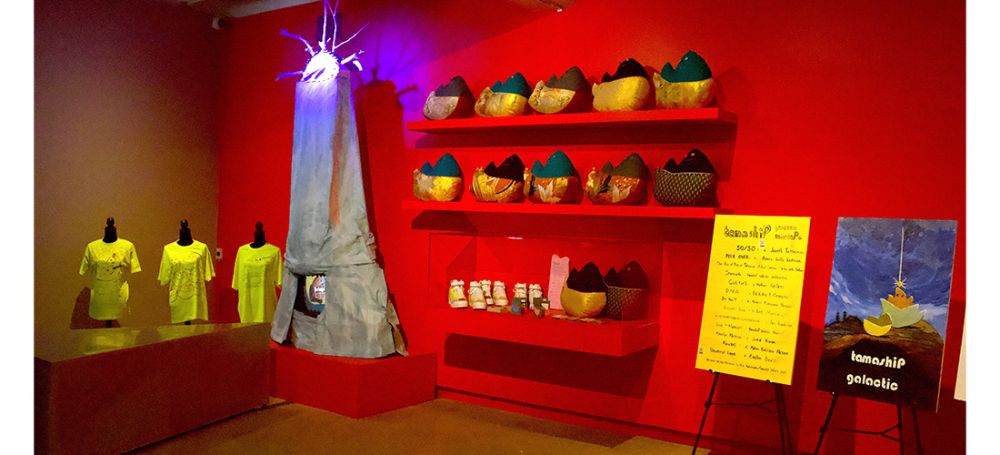Alan Nakagawa’s Installation Celebrates “Orphan Objects” at the USC Pacific Asia Museum
The multimedia artist also made his installation more accessible after attending a lecture on museum accessibility.

Alan Nakagawa, ’86 BFA Fine Arts
tamashiP galactic was a multimedia installation I created for a 50th anniversary exhibition at the USC Pacific Asia Museum in Pasadena, California that ran from November 2021 to February 2022. The show, titled Interventions: Fresh Perspectives After 50 Years, included original responses to the museum’s collection and was curated by Rebecca Hall.
We were given 12 months to research the collection and create a new work in response to whatever we gravitated to. I had a meeting with the museum’s Collection Manager, Annie Lee. It was through Annie that I learned about a group of objects that were obtained by the museum before they had a proper registrar system, so these objects had no data and therefore were not of value to the museum—no date of acquisition, how they were obtained, no background information. When I heard that there were 2,400 of these objects and that the museum was planning to get rid of them, I called them “orphan objects” and decided to focus on them for my contribution to the group show.
What I developed was a fake sci-fi movie where the protagonists in the story were selected to fly not just these 2,400 objects, but every orphan object from every museum on earth, to a parallel universe where museums don’t care if there’s no background data to objects. My installation was mimicking a movie theater lobby that displayed schwag and memorabilia from this imaginary movie, i.e. the spaceship used in the movie, a movie poster, and merchandise like t-shirts, stickers, custom wallets, and high-top sneakers. I also collaborated with Pasadena-based sewing club, Sumire Kai, which fabricated a dozen dolls of the main character from the fake movie, Sarcie.
There’s also a soundtrack to the movie, which played on a loop coming out of the spaceship. In the belly of the spaceship is a video monitor that shows a loop of 240 of the 2,400 orphan objects, the soundtrack, and the lyrics to each song, much like a karaoke screen. I wrote and recorded a dozen songs that supported the narrative of the fake sci-fi movie. I tried to compose an eclectic group of songs. I also asked friends who sing to record the vocal tracks to each song to make it appear that each song was a different artist/band.
I was inspired by a workshop the museum produced early on about museum accessibility, which was a dialogue between Museum Accessibility Designer Amanda Cachia and accessibility advocate and author Alice Wong. At the end of this amazing Zoom lecture Amanda said, “Basically, we can’t wait for policy changes or legislation, we simply have to start making the change ourselves.” I decided to design my installation with many of the design points discussed during the event. The museum also arranged a meeting with Amanda, which was highly educational for me. I made adjustments in my installation, i.e. the sight line was lowered by 10 inches to accommodate visitors in wheelchairs and those who might benefit from a lower sight line than what is standard at museums. Everything that was text in my installation also had a QR code for accessible audio. The music from the spaceship was also coming out of an aluminum sound bed in front of the ship, which visitors were encouraged to sit on or touch. You could feel the vibrations of the music. It was my first time trying to be aware of accessibility issues in my installation art and I hope to learn more as I continue to present my work.
Nakagawa was recently interviewed by Devin Tsuno in the Los Angeles Times. He’s in his fourth year as the artist-in-resident at the Pasadena Buddhist Temple through Side Street Projects, creating work related to the history of the temple and the Post-WWII Japanese American community that founded it. He has a book by Writ Large Press coming out this fall that documents the artistic journey that led to his nine residencies in six years. You can find out more about Nakagawa at this link, and follow him on Instagram, @nakagawa2015.

